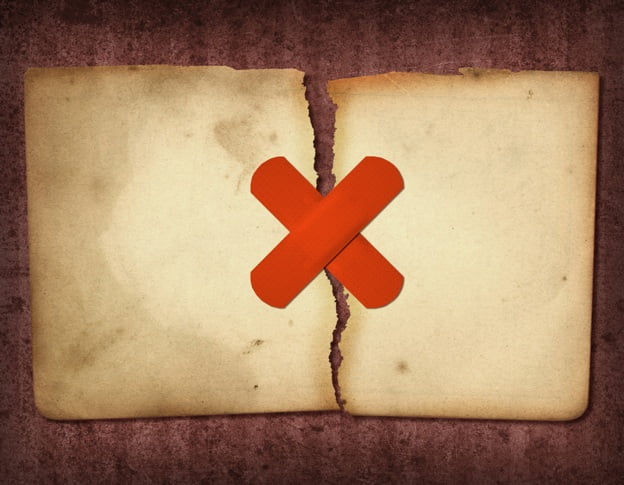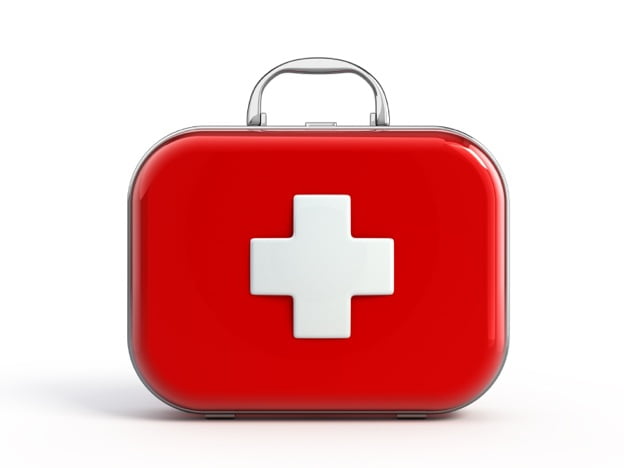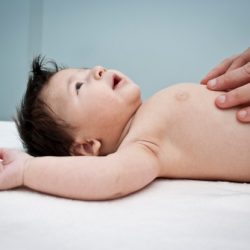SingaporeMotherhood | Baby & Toddler
April 2013
First Aid for Families

You’re pregnant, you’ve bought the necessary baby items and spent a load on infant paraphernalia. You’ve read up on how to breastfeed, how to burp the baby, how to distinguish between her cries, and where to order her first month ang ku kueh from. But are you really ready?
When you have a child, you are responsible for his or her safety and welfare. True, you could easily dial 995 to call for ambulance in case of an emergency. But not every situation will require the immediate attention of an A&E doctor, and in certain situations there may not even be enough time! So knowing the basics of First Aid is important. You never know when your skills in this area will come in handy.
[banner][/banner]
INJURY PREVENTION
It is always best to prevent rather than to heal. According to Dr Simon Ng, a pediatrician at Mount Alvernia Hospital, parents of toddlers should be continually on the lookout for possible danger causes:
Indoors
- Keep the child’s environment free of smoke.
- Test smoke detectors to ensure that they work properly. Change batteries yearly.
- Keep cooking utensils, hot liquids, knives and hot pots on the stove out of reach.
- Ensure that electric wires, outlets and appliances are inaccessible or protected.
- Keep cigarettes, lighters, matches, alcohol, electrical tools, medications and household cleaning products locked up and out of the child’s sight and reach.
- Use locked doors or gates at the top and bottom of stairs and safety devices on windows.
- Supervise the child when he or she is on the stairs.
- Never leave a child alone in the car or in the house.
- Do not expect young children to supervise toddlers.
Outdoors
- Ensure that the child wears a life vest when boating, even when the child knows how to swim.
- Children should be supervised by an adult whenever they are in or near water.
- Put sunscreen on the child before he or she goes outside to play or swim.
On the move
- Belt up. Small children should be seated in age-appropriate car seat that is properly secured at all times.
- When riding bicycles, both adult and child are to wear helmets.
- Teach children to be cautious when approaching dogs, especially if the dog is unknown or eating.
WHAT TO PUT INTO YOUR FIRST AID BOX
Every family home should have a First Aid box. According to the Mayo Clinic Family Health Book, basic must-have supplies in the box should include:
- Adhesive or gauze wrappings or pads in several sizes
- Bandages or surgical tape
- Soap
- Sterile gauze
- Absorbent cotton
- Adhesive tape
- Tweezers
- Sharp scissors
- Cotton-tipped swabs
- Tissues
- Thermometer
- First aid manual
- Aspirin or acetaminophen
- Antiseptic solution
- Antiseptic cream
- Hydrocortisone cream for bites and stings
- Medicines including antihistamine tablets, an antidiarrheal medication, insulin and a simple sugar (for diabetics).
INSIDE A MUM’S FIRST AID BOX
Mrs Teresa Lau, a mother of three grown children and grandmother of four, shares the contents of her First Aid kit. This kit is always within reach, and goes with her on every holiday. Please note that this is an individual’s First Aid box, and not a guide on what you should have in yours. Every family’s First Aid box will be different, as each family has different wants and needs.
Supplies:
bandages, plaster, cotton balls, scissors, thermometer, cold compress, Calamine lotion, sunscreen for swimming, Eye Mo or No More Tears, antiseptic cream, mosquito repellent, Hydroderm for insect bites and itches (for children), Mopiko (for adults), and Zambuk (for bumps an scrapes).
Oral medicines:
Paracetamol for adults and children, Dentinox colic drops for indigestion (for children), Pochai pills for indigestion (for adults), cough syrup, carbon pills, Dufalac laxative, the children’s medications (if required).

SIMPLE SOLUTIONS FOR EVERYDAY SITUATIONS
In addition to making sure that your home First Aid box is well-equipped, parents, guardians, child care teachers and helpers need to arm themselves with knowledge on how to react in certain circumstances.
Minor wounds:
wash the area with mild soap and water, pat dry with a clean cloth, apply antibiotic cream and cover with a bandage.
Bee sting:
remove the stinger and apply an ice pack or a cold moist cloth.
Jellyfish sting:
get out of the water, remove the tentacles with a protected hand, inactivate the stinging by gently rub the area with salt, sugar, or dry sand, wash the area with seawater or saltwater (freshwater is a no-no) and apply hydrocortisone cream.
Severe bleeding:
lay the person down, elevate the bleeding site, remove obvious dirt particles and apply pressure directly to the wound using gauze or a clean cloth.
Nosebleed:
sit or stand straight, do not tip the head back, pinch the nose and breathe through the mouth for five or 10 minutes until it stops.
Minor burn:
if the skin is unbroken, run cool water over the area or soak it in a cool water for two to five minutes, cover the burn with a sterile bandage or clean cloth.
Choking:
do the Heimlich Maneuver on adults or pat gently on the back of a young child as he lies down on his tummy over your knees (or on your arm in the case of babies).
TAKE A FIRST-AID CLASS
It’s better to be safe than sorry. Practice makes perfect. Seriously, there’s no better reason to be a ‘kiasu’ mummy or daddy. Here is a list of places where you can learn to handle simple emergencies.
ParentLink
First aid classes are run by Eileen Goh, a certified St. John Ambulance Singapore First Aid instructor.
Mother & Child
Mother & Child offers several First Aid classes to meet the needs of your family, including Mothers and Baby First Aid, and First Aid for Helpers.
Singapore Red Cross Society
Offers a First Aid and adult CPR course for people who want to be certified as a first aider. This is an accredited course by the National First Aid Council (NFAC) for the National Registry of Coaches (NROC) for 2012/2013.
First Aid Tuition Pte Ltd
Participants in certification courses, who are able to demonstrate the necessary practical skills and pass the written examination, receive American Red Cross certification. There are courses for young ones too.
Singapore First Aid Training Centre
The Basic First Aid Course is designed to equip you with the essential skills in First Aid and CPR. It provides a good coverage of common emergencies and the correct management.
Emergencies First Aid & Rescue Pte Ltd
Equips Infant Care / Child Care Personnel with the necessary First Aid Skills to handle emergencies while taking care of their young charges.
All content from this article, including images, cannot be reproduced without credits or written permission from SingaporeMotherhood.
Follow us on Facebook, Instagram, and Telegram for the latest article and promotion updates.





